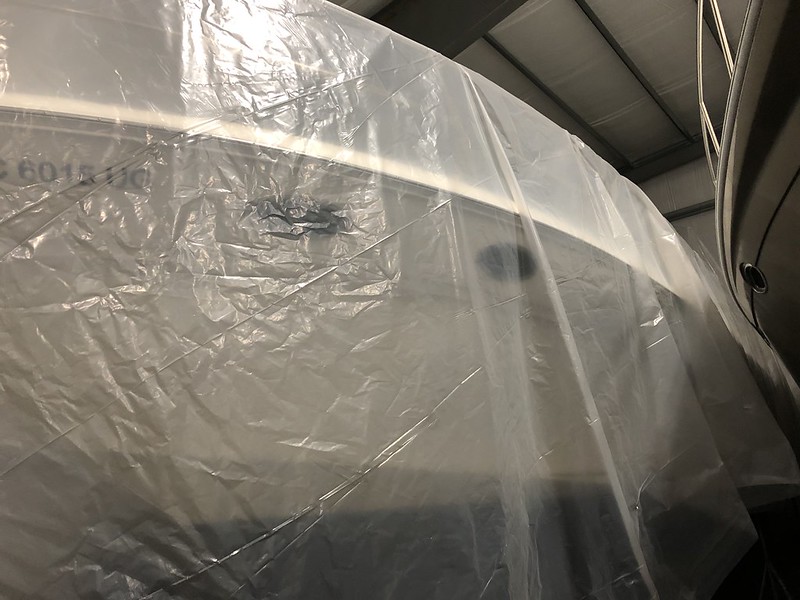Yesterday I finished a polish+wax on the hull sides on my boat. I used a Presta "ultra polish" (a very light compound) followed by a polymer wax (hand applied). I have a Dewalt rotary w/ Presta wool buffing pads.
As I was waxing I could definitely see where I was doing a less than perfect job with the polish/rotary. Three things occurred to me - 1.) Lighting can add to the challenge of polishing, 2.) the pads definitely load up about half way through a side on a 40' boat, using a spur helps...a little and 3.) a Dewalt rotary is insanely heavy as you get toward the front of the boat (assuming you start at the stern).
The lighting topic was more challenging than I thought it would be, even when using a bright work light. Based on my online education on polishing )) if you're doing it right you work the polish until it's basically gone which happens pretty quickly if you don't overdo the polish. But depending on lighting and angle its hard to see where you've hit the sides with polish before it starts to work into a shine.
)) if you're doing it right you work the polish until it's basically gone which happens pretty quickly if you don't overdo the polish. But depending on lighting and angle its hard to see where you've hit the sides with polish before it starts to work into a shine.
It's also quite an art trying to find the right angle for using a rotary on vertical(ish) surfaces. Keeping consistent contact without it jumping around...not super easy.
I'm going to move on to the deck now. It should be easier in terms of the weight of the polisher but there are a lot of things to work around up there. I plan to compound, polish and then wax the deck surfaces. My deck is quite a bit more chaulky than the hullsides.
Just thought I'd share since we've been a little light on portable generator threads this winter!
Until I return...she's still all tucked in.
![Image]()
As I was waxing I could definitely see where I was doing a less than perfect job with the polish/rotary. Three things occurred to me - 1.) Lighting can add to the challenge of polishing, 2.) the pads definitely load up about half way through a side on a 40' boat, using a spur helps...a little and 3.) a Dewalt rotary is insanely heavy as you get toward the front of the boat (assuming you start at the stern).
The lighting topic was more challenging than I thought it would be, even when using a bright work light. Based on my online education on polishing
It's also quite an art trying to find the right angle for using a rotary on vertical(ish) surfaces. Keeping consistent contact without it jumping around...not super easy.
I'm going to move on to the deck now. It should be easier in terms of the weight of the polisher but there are a lot of things to work around up there. I plan to compound, polish and then wax the deck surfaces. My deck is quite a bit more chaulky than the hullsides.
Just thought I'd share since we've been a little light on portable generator threads this winter!
Until I return...she's still all tucked in.










